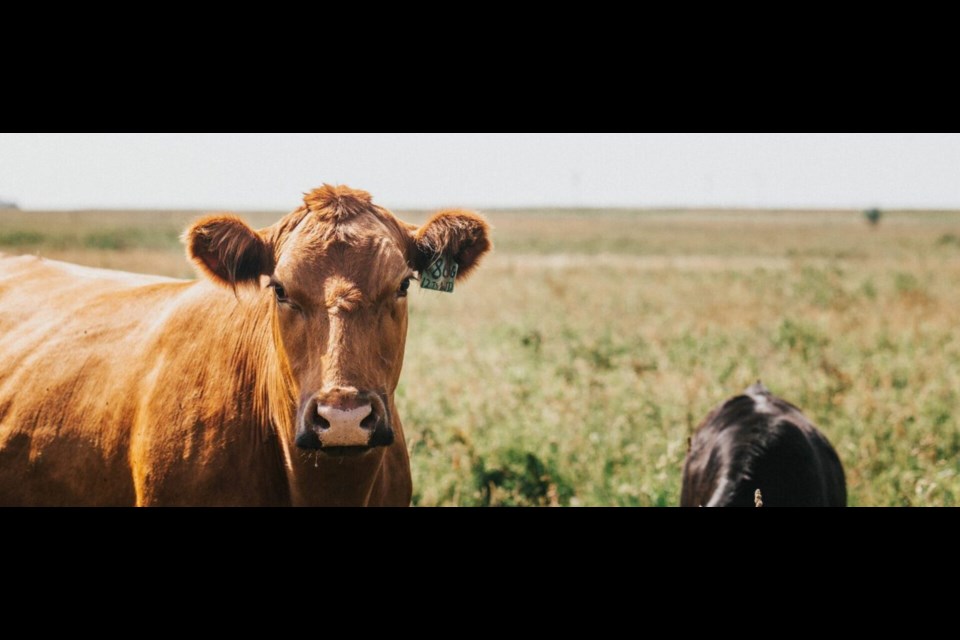SASATOON — “During a drought, feed resources are the limiting factor and producers have some tough decisions to make around finding feed or culling the herd to ensure cattle maintain a proper ,” says Dr. John Campbell, veterinarian and professor in the Department of Large Animal Clinical Sciences at the Western College of Veterinary Medicine.
While it might seem tempting to allow cows to drop a condition score, Dr. Bart Lardner, Ministry of Agriculture Strategic Research Program Chair in Cow-Calf and Forage Systems and professor at the University of Saskatchewan, reminds producers that this can cause long-term issues such as reproductive wrecks in the fall.
“It is extremely expensive to feed up a body condition score during winter,” Lardner says, adding that it is cheaper to maintain cows in good condition than to add condition later even when feed sources are limited.
Consider or to help take some stress off the cow and keep them in better shape going into the fall. “The cow will sacrifice her energy reserves to take care of the calf,” says Lardner.
Campbell recognizes that early weaning can create challenges with marketing or but points out that a dry cow will consume three-quarters of the amount of feed that a lactating cow with a calf will require. Weaning sooner than expected can allow producers to stretch feed resources farther and help get the cows back in better condition for the following year.
Deciding to cull or buy feed at high prices can be an extremely tough decision and it is often helpful to revert to drought plans made in better years to help make the decision more strategically than emotionally.
Seven Things To Be Aware of During Times of Drought:
1. Vitamin A deficiencies. is in abundance in green leafy forages but in drought conditions, cattle can have a hard time meeting their requirements. “In drought conditions, cows are going through a significant portion of their pregnancy without access to green grass,” says Campbell. This can cause problems in cows but also calves, as they don’t receive an adequate supply of colostrum.
2. Litter matters. When conditions are dry, producers are often looking for ways to reduce stocking rates on pasture to balance cow needs with forage availability. It may be tempting to graze pastures shorter than normal, but Lardner points out that, in dry periods, leaving litter or standing grass is even more important. “Litter has an insulating factor that helps to keep the soil temperature moderate and can help capture those small, one-tenth-of-an-inch rainfalls that we do get,” he explains. Reducing stocking rates on pasture and leaving litter will speed up the in the long run and also will help to prevent further deterioration.
3. Know your forages. Drought-tolerant tame are better able to handle grazing pressure during a dry year. “Forages like crested wheatgrass or Russian wild rye are much better able to handle grazing and more likely to regrow with low moisture levels,” suggests Lardner.
4. Nitrate toxicity. This can become a problem when grazing or feeding annual crop residue. If salvaging annual crops for feed, be sure to perform a to test for nitrates. If possible, have the lab provide the per cent nitrates in the feed, not just a “yes” or “no” presence. This information will help you and your nutritionist make decisions about managing feed sources.
5. Feed testing is even more important with salvaged crops. With many places declaring agricultural states of emergency, producers may have access to like canola, lentils or peas that they would not normally have. These products can be extremely helpful in extending the grazing season or providing stored feed, but they can also come with issues such as high sulfur levels. “It’s all about adaptation of your animals,” says Lardner, concerning grazing or feeding alternate crops. “Giving animals seven to ten days to transition onto these salvage crops will help their rumen adjust to the different fibre source and can help prevent issues with toxicities.”
6. Watch for toxic plants. Under normal grazing conditions, cattle will often avoid most , but in drought years they may be more likely to consume them. This can be a particular problem in riparian areas or where cattle have direct access to water.
7. Access to stock water. Both can change rapidly during a drought. Lardner recommends and fencing and pumping water wherever possible. This can help maintain water quality and preserve what quantity is left.
When drought strikes, producers are forced to rely on quick decision-making skills. Pastures or water sources that were good yesterday may not be okay today; a crop that looked like it would yield well last week may be faced with decisions of how to salvage it now.
Salt toxicity reminder: Low water levels in dugouts and drier alkali flats may result in higher than expected salt concentrations in animal water sources or forage. Affected animals need to have normal salinity water intake slowly increased over several days.
Keeping some of these points in mind may help prevent these short-term decisions from having lasting effects on your herd. The cost of a call to a veterinarian or nutritionist may be justified to prevent long-term herd health issues.
Sometimes help isn’t just needed for your herd. When the stress of drought gets overwhelming, please reach out to your community or professionals for mental health support. The website has several great resources, call line numbers and ag support groups.




